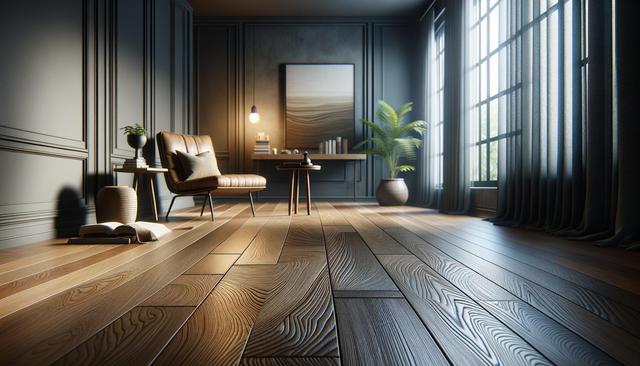Choosing the Right Hardwood Flooring for Kitchens
When it comes to hardwood flooring in kitchens, not all options are created equal. The kitchen environment, with its moisture and heavy foot traffic, presents unique challenges. Oak hardwood flooring is renowned for its durability and resilience, making it one of the top options for kitchen environments. Its dense grain and ability to withstand wear and tear without losing its charm make it a popular choice. However, it’s vital to consider the specific characteristics of each type of hardwood to ensure it complements your kitchen both aesthetically and functionally. Among the best choices, engineered hardwood flooring offers superior stability in moisture-prone areas. Its layered construction minimizes the risks associated with expansion and contraction, making it a practical solution for kitchen flooring.
Benefits of Oak Hardwood Flooring
Oak hardwood flooring stands out for various reasons, particularly in kitchens. Its exceptional quality makes it favored by many homeowners. Here are some reasons why oak is highly rated:
- Durability: Oak is known for its hard-wearing nature, which is essential in high-traffic areas like kitchens.
- Variety: It offers a wide range of finishes and stains, allowing homeowners to customize their flooring to match any kitchen design.
- Maintenance: With proper care, oak hardwood floors maintain their beauty for decades, offering a good return on investment.
Despite its benefits, the hardwood flooring installation cost for oak may vary depending on the type and finish selected. It’s advisable to consult with professionals to get an accurate estimate for your floor install.
Hardwood Installation Considerations
Proper hardwood installation is crucial to ensure the longevity and performance of your floors. In kitchens, it’s essential to consider the potential for spills and moisture. A professional flooring installation ensures that each plank is correctly acclimated and installed to mitigate the risks of water damage. Additionally, applying a high-quality sealant can offer an extra layer of protection against spills and stains. An attentive installation process goes a long way in maintaining the floor’s integrity and appearance over time.
Maintaining Hardwood Floors in Wet Environments
Keeping hardwood floors looking outstanding in a kitchen requires regular maintenance and care. Some essential tips for maintaining hardwood flooring in this area include:
- Immediate clean-up of spills to prevent moisture penetration.
- Regular sweeping and mopping with a damp (not wet) mop to remove dirt and debris.
- Utilizing area rugs in high-traffic zones to reduce wear.
With these measures, your hardwood floors can remain beautiful and functional for years. It’s also beneficial to occasionally reseal the floors to enhance their water resistance.
Understanding Hardwood Flooring Installation Cost
The hardwood flooring installation cost can vary significantly depending on factors such as the type of wood, the complexity of the floor install, and regional labor rates. While oak hardwood flooring is among the top-rated choices, its installation might require a higher initial investment compared to other types like engineered wood. However, the unmatched durability and timeless appeal of hardwood can add significant value to your home. Considering both the short-term costs and long-term benefits is essential when planning for a kitchen renovation.
Conclusion
Choosing the right hardwood flooring for your kitchen can transform the space into an elegant and functional area. By selecting durable options like oak hardwood flooring and ensuring proper installation and maintenance, you can enjoy the beauty and practicality of your floors for years to come. Understanding the factors influencing hardwood flooring installation cost and the benefits of professional floor install services can help you make informed decisions that align with your aesthetic preferences and budget. With the right approach, your kitchen can reflect both style and resilience.
